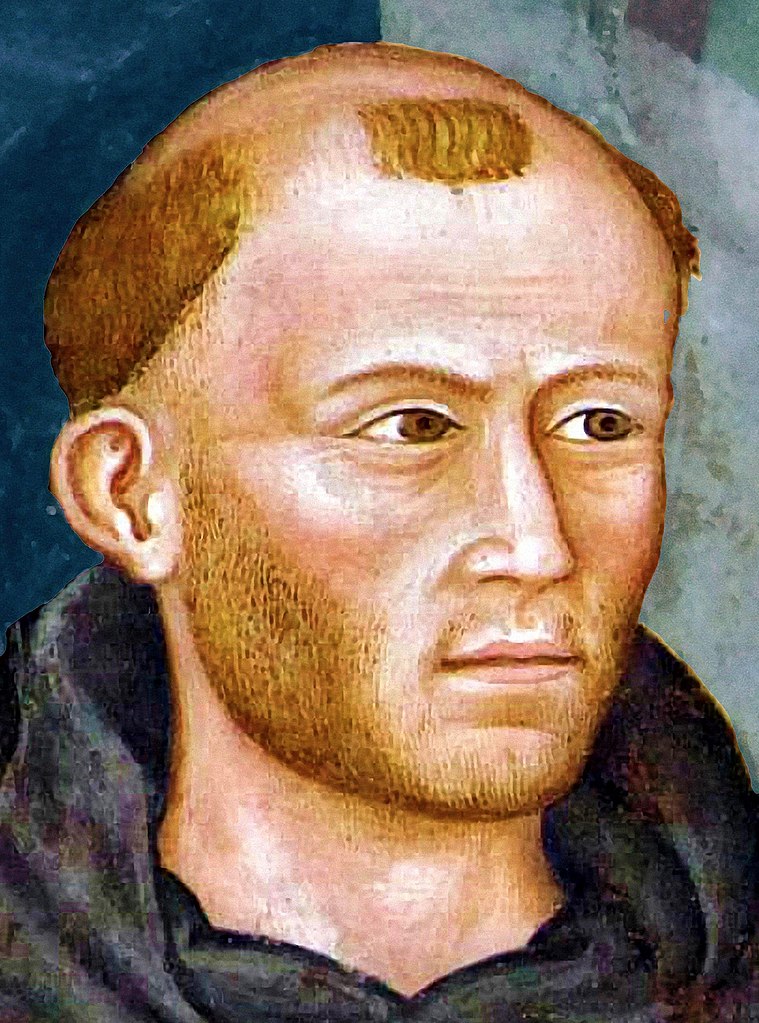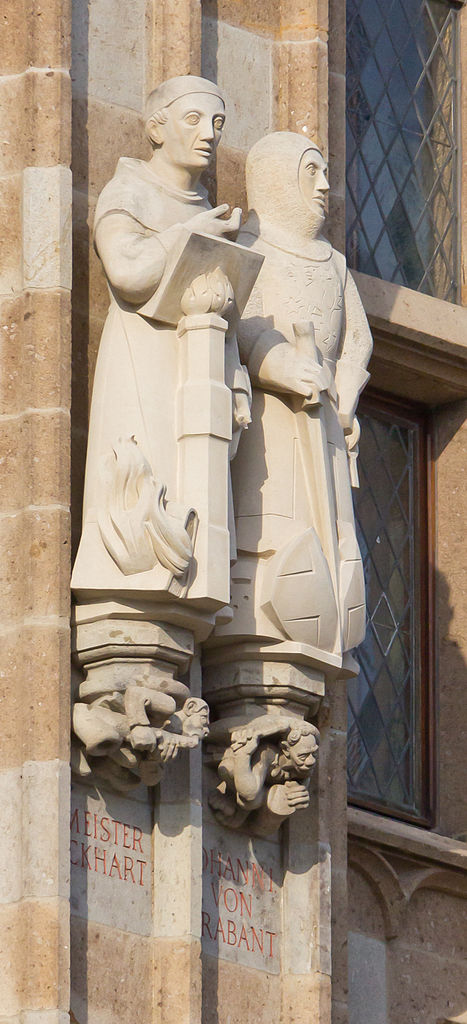“Absolute nothingness signals, for Eckhart, the point at which all modes of being are transcended, at which not only the various modes of created being but even the modes of divine being – such as Creator or Divine Love – are transcended. Creator, he says, is the Form of God that is bared to creatures and seen from the standpoint of creatures, and as such is not to be taken as what God is in himself, as the essence of God. It is the same when God is said to be Love or to be Good. The essence of God that renders ineffable each and every mode of being (and each and every Form) can only be expressed as absolute nothingness” (Nishitani Keiji – Religion and Nothingness pg 61-62).
In his final essay, “The Logic of the Place of Nothingness and the Religious Worldview,” which he completed in the last few months of his life in 1945, Nishida Kitaro had asserted that Zen had “nothing to do with mysticism.” Yet, it was only natural that Nishitani, his main disciple, focused as he was on “absolute nothingness,” and later on the “field of emptiness,” would be drawn to Meister Eckhart (1260–1328), a German theologian, philosopher and mystic, who had postulated a godhead (Gottheit) as the “essence” of God the Creator, and described in terms of “absolute nothingness.” Nishitani showed interest in Eckhart as early as the time of his study with Martin Heidegger (1937-39), and he gave a talk on his thought at the University of Freiburg. In 1959, Nishitani’s disciple, Ueda Shizuteru, enrolled at the University of Marburg where he studied Middle High German and Latin before embarking on a PhD dissertation on Meister Eckhart, which he published in 1965 under the title “Die Gottesgeburt in der Seele und der Durchbruch zur Gottheit. Die mystische Anthropologie Meister Eckharts und ihre Konfrontation mit der Mystik des Zen-Buddhismus.”

Nishitani wrote that Eckhart had offered the West “the most radical example of negative theology.” He borrows from him such notions as the kenosis of God, and the ekkenosis of Christ, when working out his description of emptiness (sunyata) as a dynamic “self-emptying.” He also draws on Eckhart’s conception of a “living without why” (Leben Ohne Warum) when he later asks “What kind of a life is this life of affirmation? The lived realization of emptiness, its existential appropriation, conquers nihilism with an attitude of profound play that might be characterized by the gatheredness of samadhi or in Eckhartian terms life living itself without why or Leben ohne Warum … In freedom from the fetters of attachment, all our work takes on the character of play without aim or reason or cause, having cast off the character of why or wherefore” (RN 180). A detour via the Rhineland where Eckhart and his disciples lived is therefore essential.
Nishitani writes: “Absolute nothingness signals, for Eckhart, the point at which all modes of being are transcended, at which not only the various modes of created being but even the modes of divine being – such as Creator or Divine Love – are transcended. Creator, he says, is the Form of God that is bared to creatures and seen from the standpoint of creatures, and as such is not to be taken as what God is in himself, as the essence of God. It is the same when God is said to be Love or to be Good. The essence of God that renders ineffable each and every mode of being (and each and every Form) can only be expressed as absolute nothingness” (RN 61-62).
Since it is said “that man has been made in the image of God, this includes the godhead of absolute nothingness. When the image of that God becomes active in the soul of man, through the working of Holy Spirit, man is said to become a ‘son of God’.” Eckhart calls this the “birth of God” in the soul” (RN 62).
Nishitani continues: “As an event of history, the incarnation of God in Christ represents the ‘birth of God’ in the world of man. What Eckhart does is to draw that event into the interior of the soul of man. When a human being thus becomes the living image of God, there opens up within his soul a path leading all the way to the essence of God. This is so by virtue of the fact that the God who comes to birth within him – the Christ alive within his soul – includes not only the entire God of the Trinity but also the godhead. For the soul, ascent of the path that has opened up means to enter, step by step, deep within God and finally to attain union with him” (RN 62). This is achieved as the self is broken through again and again.

This, however, is only the first step. “The soul proceeds further, penetrating into the God that has been born within it, into the revelation of the depths of God breaking its way up from the soul’s innermost recesses. Even in so doing, the soul returns more and more deeply to itself and becomes more and more truly itself. Eckhart conceived of this as the soul ‘breaking through’ God, with its final consummation at the breakthrough to the essence of God: absolute nothingness, a point at which not a single thing remains. He calls this the ‘desert’ of the godhead … Although it marks the point at which the soul can for the first time return to be itself, it is at the same time the point at which God is in himself. It is the ground of God.” Then, quoting Eckhart: “As God breaks through me, so I, in turn, break through him. God leads my spirit into the desert and into his self-identity, where he is a pure One, springing up within himself.” (RN 62) Eckhart himself stresses that, “it is not a matter of being united with God (Deo unitum esse), but of being one with God (unum esse come Deo). It is, if you will, the self-identity of the soul that is self-identical with the self-identity of God. It brings the soul to a desert of absolute death, and at the same time discloses a fountainhead ‘springing up within itself’ of absolute life”(RN 62-63). Remember the last line of the Great Doubt: “When you are no longer aware of your being completely like a dead man, and are no more conscious of the procedure of the Great Doubt but become yourself, through and through, a great mass of doubt, there will come a moment, all of a sudden, at which you emerge into a transcendence called the Great Enlightenment, as it you had awoken from a great dream, or as if, having been completely dead, you had suddenly revived.” In Eckhart’s words: “The ground of God is the ground of my soul; the ground of my soul is the ground of God … Here I live out of my authentic nature (Eigen) even as God lives from his … The eye with which I see God is the eye with which God sees me.”
Nishitani highlights three features Zen shares with Eckhart’s thought: “First, he locates the ‘essence’ of God at a point beyond the personal God who stands over against created beings. Second, this essence of God, or godhead, is seen as an absolute nothingness, and moreover becomes the field of our absolute death-sive-life. Third, only in the godhead can man truly be himself, and only in the openness of absolute nothingness can the consummation of the freedom and independence of man in subjectivity be effected” (RN 63).
In both cases, “subjectivity” is not that of the ego, but that which “comes about from the absolute death of ego (what Eckhart calls Abgeschiedenheit) and from pure oneness with God.” Pure, here refers to the “nonobjective character of this oneness” (RN 63). It goes beyond the unio mystica which still harbours presupposition of dualism of subject and object. It is a “losing oneself in God, in an absolute oneness” (RN 63). For Eckhart, “the ground of subjectivity is to be found only at the point that one reaches beyond God for the absolute nothingness of godhead. This is the field of the ‘uncreated I am’, where, Eckhart tells us, the self has been positioned eternally from before the creation of the world, standing in the godhead already before God spoke his Word (RN 63).”
Eckhart, however, “insists that it needs to be lived right in the midst of everyday life in the immediacy of which it discloses itself … Nor can ‘standing in the godhead’ be interpreted as the contemplation of God, since it is already beyond all intellectual understanding, including even the intuitive intellection that is proper to the contemplation of God. It is rather the realization (in the twofold sense as actualization and appropriation) within everyday life of the nothingness of the godhead” (RN 64). Eckhart himself was not a recluse, spending his days and nights in contemplation. He held positions of responsibility as Prior and Provincial, at one point being responsible for overseeing forty-seven convents in Saxony. He also taught at the Sorbonne in Paris. He was as actively engaged in the history of his time as one could be. This, in fact, led him to being accused of heresy. His “crime” had been to teach to ordinary members of congregations that God had become human in Jesus so that humans could realise divinity, in the Buddhist sense of attaining enlightenment. And it was a crime because it was held that ordinary people would take this to mean that they could “be” God.
Nishitani insists that “The very distinction between God and godhead is necessitated by the opening of the path to subjectivity. “I flee from God for the sake of God,” writes Eckhart. “I beg of God that he make me rid of God.” Fleeing God for God’s sake seems to mean that the here-and-now Dasein of man can bear witness essentially to God only through man’s truly finding himself in the nothingness of the godhead” (RN 64).
He adds further on: “When I break through and stand emptied [ledig stehen] of my own will, of the will of God, of all the works of God, and of God himself, I am beyond all creatures, and I am neither God nor creature but am what I was and what I should remain now and forever more” (RN 64).
Sources:
Nishitani Keiji – Religion and Nothingness
Nishida Kitaro – The Logic of the Place of Nothingness and the Religious Worldview in Last Writings
